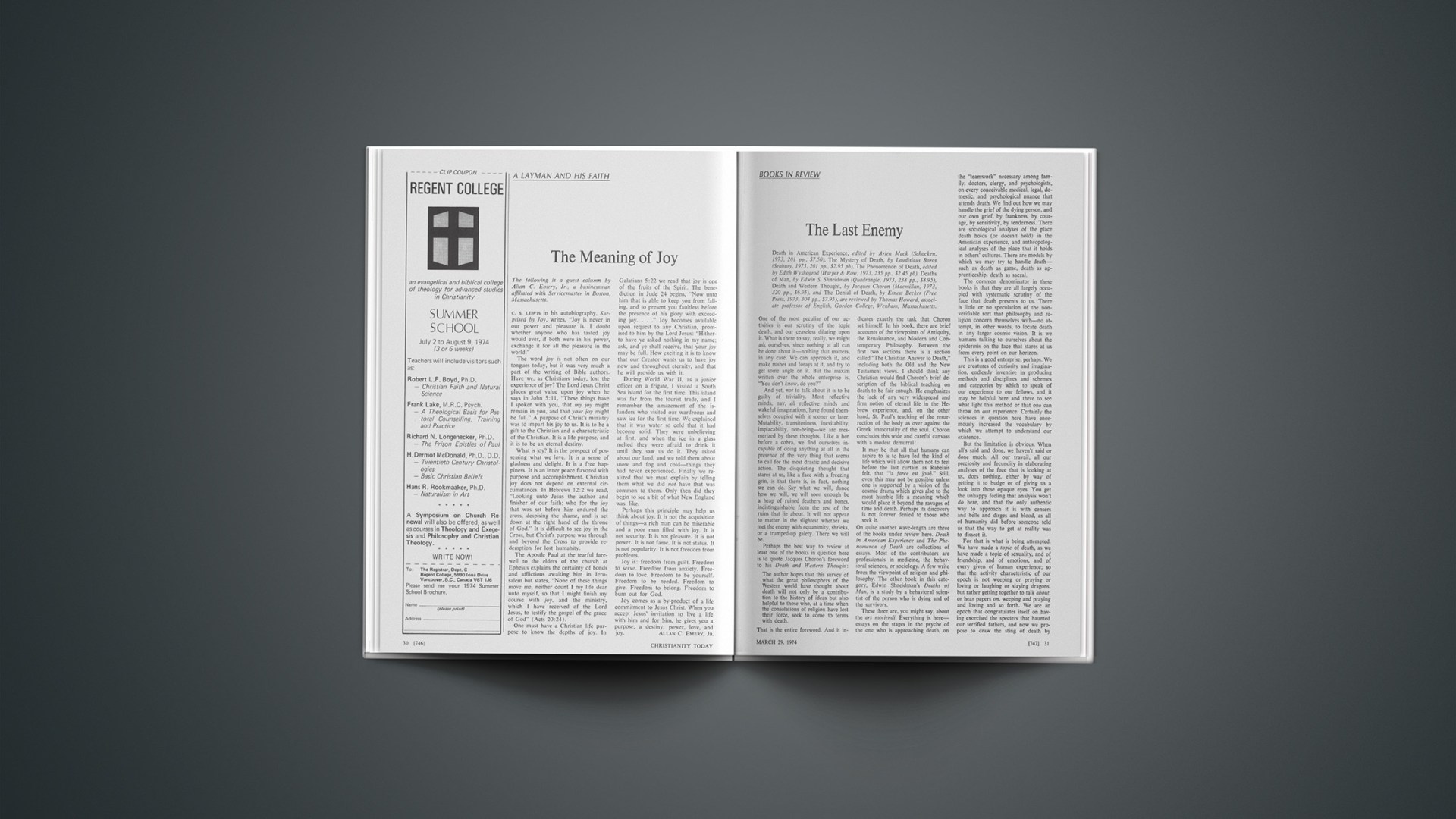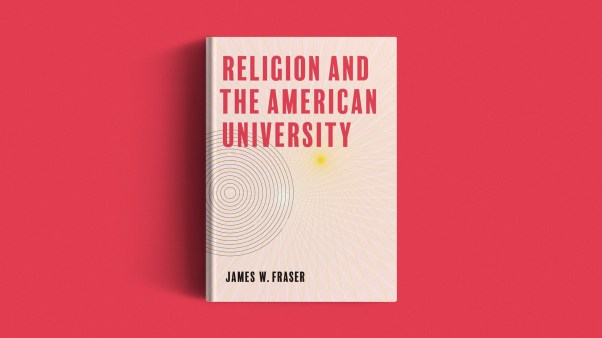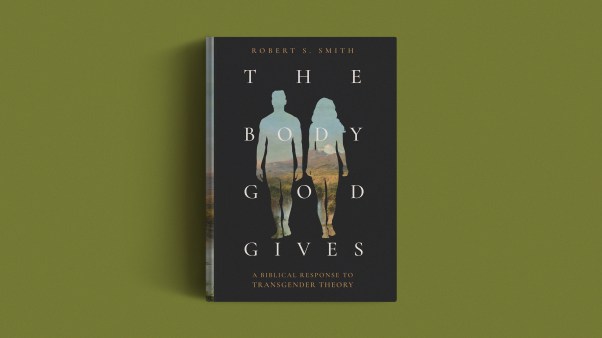The Last Enemy
Death in American Experience, edited by Arien Mack (Schocken, 1973, 201 pp., $7.50), The Mystery of Death, by Laudislaus Boros (Seabury, 1973, 201 pp., $2.95 pb), The Phenomenon of Death, edited by Edith Wyshogrod (Harper & Row, 1973, 235 pp., $2.45 pb),Deaths of Man by Edwin S. Shneidman (Quadrangle, 1973, 238 pp., $8.95), Death and Western Thought, by Jacques Choron (Macmillan, 1973, 320 pp., $6.95), and The Denial of Death, by Ernest Becker (Free Press, 1973, 304 pp., $7.95), are reviewed by Thomas Howard, associate professor of English, Gordon College, Wenham, Massachusetts.
One of the most peculiar of our activities is our scrutiny of the topic death, and our ceaseless dilating upon it. What is there to say, really, we might ask ourselves, since nothing at all can be done about it—nothing that matters, in any case. We can approach it, and make rushes and forays at it, and try to get some angle on it. But the maxim written over the whole enterprise is, “You don’t know, do you?”
And yet, not to talk about it is to be guilty of triviality. Most reflective minds, nay, all reflective minds and wakeful imaginations, have found themselves occupied with it sooner or later. Mutability, transitoriness, inevitability, implacability, non-being—we are mesmerized by these thoughts. Like a hen before a cobra, we find ourselves incapable of doing anything at all in the presence of the very thing that seems to call for the most drastic and decisive action. The disquieting thought that stares at us, like a face with a freezing grin, is that there is, in fact, nothing we can do. Say what we will, dance how we will, we will soon enough be a heap of ruined feathers and bones, indistinguishable from the rest of the ruins that lie about. It will not appear to matter in the slightest whether we met the enemy with equanimity, shrieks, or a trumped-up gaiety. There we will be.
Perhaps the best way to review at least one of the books in question here is to quote Jacques Choron’s foreword to his Death and Western Thought:
The author hopes that this survey of what the great philosophers of the Western world have thought about death will not only be a contribution to the history of ideas but also helpful to those who, at a time when the consolations of religion have lost their force, seek to come to terms with death.
That is the entire foreword. And it indicates exactly the task that Choron set himself. In his book, there are brief accounts of the viewpoints of Antiquity, the Renaissance, and Modern and Contemporary Philosophy. Between the first two sections there is a section called “The Christian Answer to Death,” including both the Old and the New Testament views. I should think any Christian would find Choron’s brief description of the biblical teaching on death to be fair enough. He emphasizes the lack of any very widespread and firm notion of eternal life in the Hebrew experience, and, on the other hand, St. Paul’s teaching of the resurrection of the body as over against the Greek immortality of the soul. Choron concludes this wide and careful canvass with a modest demurral:
It may be that all that humans can aspire to is to have led the kind of life which will allow them not to feel before the last curtain as Rabelais felt, that “la farce est joué.” Still, even this may not be possible unless one is supported by a vision of the cosmic drama which gives also to the most humble life a meaning which would place it beyond the ravages of time and death. Perhaps its discovery is not forever denied to those who seek it.
On quite another wave-length are three of the books under review here. Death in American Experience and The Phenomenon of Death are collections of essays. Most of the contributors are professionals in medicine, the behavioral sciences, or sociology. A few write from the viewpoint of religion and philosophy. The other book in this category, Edwin Shneidman’s Deaths of Man, is a study by a behavioral scientist of the person who is dying and of the survivors.
These three are, you might say, about the ars moriendi. Everything is here—essays on the stages in the psyche of the one who is approaching death, on the “teamwork” necessary among family, doctors, clergy, and psychologists, on every conceivable medical, legal, domestic, and psychological nuance that attends death. We find out how we may handle the grief of the dying person, and our own grief, by frankness, by courage, by sensitivity, by tenderness. There are sociological analyses of the place death holds (or doesn’t hold) in the American experience, and anthropological analyses of the place that it holds in others’ cultures. There are models by which we may try to handle death—such as death as game, death as apprenticeship, death as sacral.
The common denominator in these books is that they are all largely occupied with systematic scrutiny of the face that death presents to us. There is little or no speculation of the non-verifiable sort that philosophy and religion concern themselves with—no attempt, in other words, to locate death in any larger cosmic vision. It is we humans talking to ourselves about the epidermis on the face that stares at us from every point on our horizon.
This is a good enterprise, perhaps. We are creatures of curiosity and imagination, endlessly inventive in producing methods and disciplines and schemes and categories by which to speak of our experience to our fellows, and it may be helpful here and there to see what light this method or that one can throw on our experience. Certainly the sciences in question here have enormously increased the vocabulary by which we attempt to understand our existence.
But the limitation is obvious. When all’s said and done, we haven’t said or done much. All our travail, all our preciosity and fecundity in elaborating analyses of the face that is looking at us, does nothing, either by way of getting it to budge or of giving us a look into those opaque eyes. You get the unhappy feeling that analysis won’t do here, and that the only authentic way to approach it is with censers and bells and dirges and blood, as all of humanity did before someone told us that the way to get at reality was to dissect it.
For that is what is being attempted. We have made a topic of death, as we have made a topic of sexuality, and of friendship, and of emotions, and of every given of human experience; so that the activity characteristic of our epoch is not weeping or praying or loving or laughing or slaying dragons, but rather getting together to talk about, or hear papers on, weeping and praying and loving and so forth. We are an epoch that congratulates itself on having exorcised the specters that haunted our terrified fathers, and now we propose to draw the sting of death by analyzing it. Control is our own special word: we are moving further and further toward the point of control over our environment and the ambiguities of existence, and it is via science and technology that we will do this—by cryogenics, if all else fails.
NEWLY PUBLISHED
Justice Now! (American Bible Society [Box 3537, G.C.S., New York, N. Y. 10017], 58 pp., 10ȼ). A bargain price. The inspired prophecies of Hosea, Amos, and Micah are now available in Today’s English Version, a modern language translation (not a paraphrase).
… And There Will Be Famines, by Larry Ward (Regal, 114 pp., $1.25 pb). From personal observation of starvation come some startling accounts and insights. Ward’s purpose is to inform Christians and give a biblical basis for concern and specific suggestions.
Train Up a Child: Guidelines For Christian Parents, by Richard D. Dobbins (Baker, 87 pp., $.95 pb). General comments, many from Scripture, some from common sense or psychology, on the practical side of child rearing. Helpful in initiating study and thinking.
Charismatic Catholics: Are They For Real?, by R. Douglas Wead (Creation, 120 pp., $3.95), and Look Out! The Pentecostals Are Coming, by Peter Wagner (Creation, 196 pp., $4.95). Here are two outsiders’ observations on aspects of the Pentecostal movement. The first is a long-time Protestant Pentecostal’s survey of the movement among Catholics since its beginning in 1967. The second is a non-Pentecostal’s observations on the movement in Latin America. Both are sensitive, sympathetic reportings.
Exposition of Second Timothy, by N. A. Woycheck (Revell, 171 pp., $4.50). A warm, personal exposition of Paul’s last letter and his instructions and relationship to the young man Timothy. Sound study and enticing reading.
Faith at the Top, by Wesley Pippert (Cook, 187 pp., $1.50 pb). Interviews by a UPI reporter with Senator Mark Hatfield, football player Charley Harraway, Representative John Anderson, and seven other prominent Christians.
The Case of a Middle Class Christian, by Charles Merrill Smith (Word, 149 pp., $4.95). Critical look at the cultural overtones in many Christians’ beliefs as seen through the author’s experiences. Calls for an honest evaluation of what we believe and why. Lightly written, but the content is serious enough to challenge most.
The New Man, edited by John Meyendorff and Joseph McLelland (Standard [364 Somerset St., New Brunswick, N.J. 08901], 170 pp., n.p., pb). A dialogue in essay form between Presbyterian and Eastern Orthodox thinkers in an attempt to begin to establish ecumenical understanding.
The Cadillac Modern Encyclopedia, edited by Max Shapiro et al. (Derbibooks [110 Enterprise Ave., Secaucus, N. J. 07094], 1,954 pp., $24.95). First edition of a very useful reference tool. There are some 18,000 alphabetical entries with up-to-date coverage of the whole range of human activity, plus numerous illustrations and charts. The many entries pertaining to religion largely succeed at accuracy and impartiality. This volume would serve most purposes for which multi-volume (and much more expensive) encyclopedias are consulted.
After the Flowers Have Gone, by Bea Decker (Zondervan, 184 pp., $3.95). Excellent help on the problems of the widowed. It also serves indirectly as a practical help on problems that confront the solo parent. The author candidly discusses in several case histories antidotes for the trauma of losing a loved one. Perfect gift for either the divorced or recently widowed.
Beginnings in Bible Geography, by Howard F. Vos (Moody, 126 pp., $1.50 pb). Introductory survey from Iran to Italy.
Concerning Death: A Practical Guide For the Living, edited by Carl Grollman (Beacon, 365 pp., $7.50). Twenty practical essays on topics such as “Care of the Dying Person,” “Children and Death,” “Insurance and Death,” and the “Condolence Letter.” Various religious practices are surveyed.
Preschool Teacher’s How-to Book, six volumes, by Marie Hibma Frost (Moody, approx. 30 pp. each, $.60 each pb). Christian education guides in the areas of pupil characteristics, effective teaching, visitation, songs to sing, action rhymes, and arts and crafts. Concise and helpful especially for the new teacher.
The Restless Pastor, by Gerald W. Gillaspie (Moody, 96 pp., $1.95 pb). Simple, practical guide for one contemplating a change of pastorates.
A Matter of Life and Death, by M. Basilea Schlink (Bethany Fellowship, 96 pp., 95ȼ). The co-foundress of the Evangelical Sisters of Mary (Darmstadt, Germany) approaches the problem of pollution with her familiar gift for prophetic insights and challenging analysis.
A New American Reformation, by James F. Drance (Philosophical Library, 166 pp., $6). Philosophical survey of the youth culture of today, first from the secular side and then from the religious, focusing on the Jesus movement. Attempts to define the movement objectively.
The Gay Church, by Ronald Enroth and Gerald Jamison (Eerdmans, 144 pp., $4.95). Two of the three authors of a widely acclaimed report on the Jesus movement now turn their attention to professedly Christian congregations that deny that homosexual practice is sinful. The movement more or less headed by Troy Perry is primarily in view. Enroth teaches sociology at Westmont College, and Jamison graduated from there.
To Kiss the Joy, by Robert A. Raines (Word, 151 pp., $4.95). Fourteen highly readable essays on such topics as “You Can Choose to Be Real,” “The Confidence to Change,” and “The Dynamics of Growth.” The author leads one carefully into spiritual handling of life’s pains and joys. His frequent references to personal experiences may repel some readers, attract others.
The Long Day of Joshua and Six Other Catastrophies, by Donald Patten, Ronald Hatch, and Loren Steinhauer (Pacific Meridian [13540 39th Ave. N.E., Seattle, Washington 98125], 328 pp., $8). Analyses of the alleged astronomical cataclysms that are used to explain biblical miracles such as the long day of Joshua, the Egyptian plagues, the tower of Babel, Sodom and Gomorrah. Theorizes that the movement of Mars and Earth caused the disturbances.
Revelation: God and Satan in the Apocalypse, by James Kallas (Augsburg, 128 pp., $2.75 pb). A Lutheran college professor comments on the style of Revelation and on various interpretations of the book. Definitely for the beginning student but takes a less sensational approach than that of many bestsellers.
The Foundations of Morality, by Henry Hazlitt (Nash, 398 pp., $12). One of America’s outstanding conservative economists makes a major effort to create an individualistic basis for a socially healthy system of ethics. Contains much of value as an antidote to collectivistic ethics, but has no theological basis.
An Introduction to Christian Economics, by Gary North (Craig Press [Box 13, Nutley, N. J. 07110], 413 pp., $9.95). Interesting and literate essays by an economist who feels that the Bible teaches certain economic principles that he pugnaciously grants are not recognized by the vast majority of economists. His biblical exegesis is also open to more questions than he seems to think. His call for secular economists to be more modest, which events are forcing them to be anyway, is well taken. But “Christian economists” need to be more modest also.
But this is too severe, of course. The editors and contributors to these books do not claim that their essays solveanything. These men and women are doing what they can to throw some light on the most terrifying of all human experiences, and to help us cope. Certainly the most well-known practitioner of non-religious means to alleviate the death experience is Dr. Elisabeth Kubler-Ross, and her modesty and apparent integrity in seeking to understand the complexities that surround this experience, and to offer real human help to dying people, are nothing but praiseworthy. Her essay “On Death and Dying” is one of four in the section “The Dying Person and His World,” in Edith Wyschogrod’s collection The Phenomenon of Death. Also in this volume is a long essay on the Hiroshima debacle by Robert Jay Lifton, and then a section of five essays under the collective title “The Death Throes of Culture,” in which death is treated as a phenomenon impinging on the self-consciousness of cultures.
If there is any way to distinguish the two collections of essays here, it might be to say that Arien Mack’s Death in American Experience is much more exclusively sociological, psychological, and anthropological than The Phenomenon of Death, which includes more material that might be called religious or philosophical. To me, the most fascinating essay in Mack’s collection is one by David Gutman entitled “The Premature Gerontocracy,” in which he draws a number of astonishing parallels between the life-denying forces at work in the counter-culture and plain old age.
Ernest Becker’s The Denial of Death is perhaps the most ambitious of the works under review here, for in it he undertakes, really, to make a new statement about the nature of man. Briefly, his thesis is that the fear of death is a (the?) mainspring of human activity, and that mental illness represents our failure to suppress our terror of death. Becker proceeds from the insights of Otto Rank, the disaffected disciple of Freud, and of Kierkegaard. He criticizes both traditional religion and traditional psychology, the former for its unabashed substitution of transcendence for an authentically heroic grappling with the real problem of death, and the latter for its attempt to analyze away our anxiety in the face of the “panic inherent in creation.” His conclusion is a somewhat elusive affirmation of “sacrosanct vitality,” and a “cosmic heroism … sacred and mysterious.” “The most [he concludes] that any of us can seem to do is to fashion something … and drop it into the confusion, make an offering of it, so to speak, to the life force.” Selah.
For the reader looking for specifically religious treatments of death, the sixth book in question, Ladislaus Boros’s The Mystery of Death, is one to read. It is heavy going, make no mistake about that. It involves a closely reasoned case, taking account of methodology and the philosophical basis for the hypothesis that “death gives man the opportunity of posing his first completely personal act; death is, therefore, by reason of its very being, the moment above all others for the awakening of consciousness, of freedom, for the encounter with God, for the final decision about his eternal destiny.” If it sounds like nonsense for a man to be elaborating an idea like this (that is, that at the point of death, we are all confronted with the occasion of making a momentous and definitive decision) when no one has ever come back from that point to tell us what it is like, the answer lies in Boros’s method. It is a matter of projecting the lines suggested to us in living existence, and seeing their point of intersection to be the point of death, and hence of having some clues as to what that intersection is like. In the second section of his book, Boros pursues some of those lines (volition, knowing, perception, and love) to that point of intersection. In his last section, he tries out his theory on several of the cardinal doctrines of the Church, to see how it works with orthodox dogma. He tests it with respect to the Christian notion of death as being in some sense final, and with respect to the doctrines of salvation through personal fellowship with Jesus Christ, and of redemption, original sin, and purification (which last item results, for Boros, in an “interiorization of the whole doctrine of purgatory”).
Books about death. They exhibit various ways of getting at it. The medical scientist must approach death as a case, with symptoms and treatment; the social scientist sees it as a topic, to be handled in papers, symposiums, and interviews; the theologian sees it as a datum in a whole scheme that encompasses death and thereby makes it in some sense significant. And we are all helped or not helped by what they have to say. Perhaps the dis-ease we feel about analytic efforts to cope with death is a fair index of our situation: it is our great Enemy, and it will destroy us, talk as we will about it. And to this situation, only the poet or the prophet can finally speak: the poet, by giving shape to the experience (e.g., Tolstoy, in The Death of Ivan Ilyich), and the prophet with the word of the living God, proclaiming that the One greater than death has himself drawn its sting by passing through that dark gate in our flesh, and opening to us mortals the way to Life.
Three Approaches
Do and Tell: Engagement Evangelism in the ’70s, by Gabriel Fackre (Eerdmans, 1973, 106 pp. $1.45 pb), Evangelism For Today’s Church, by Leslie Woodson (Zondervan, 1973, 159 pp., $1.25 pb), and The Seven Last Words of the Church, by Ralph Neighbour (Zondervan, 1973, 182 pp., $1.25 pb), are reviewed by Harold Frederic Green, pastor, The People’s Church, Gainesville, Georgia.
Everyone seems to know what to do but few seem to know how to get started when it comes to the Christian’s prime task of evangelism. And when believers do get started, disagreements over technique often appear right away.
These two publishers are to be commended for bringing us three very fine little books on evangelism. The books are highly readable, reasonably priced, and attractively printed. They offer varying approaches to the task of evangelism by a member of the United Church of Christ, a United Methodist, and a Southern Baptist.
Baptist Ralph Neighbour tries new methods to win the lost in his experimental church in Houston. He recounts, in the first section of his book, his own experiences in church renewal and spiritual outreach. In the second part he frankly evaluates attempts at church renewal and discusses evangelism methods. He closes with an excellent bibliography.
Woodson, an evangelical Methodist pastor, deals directly with the meaning, motivation, method, and mobilization of evangelism in the contemporary Church. In each category he comes to grips with some of the thorny problems of evangelism in the seventies.
Fackre, a professor of theology and culture at Lancaster Seminary, urges that evangelism concern itself primarily with doing deeds. He believes that the telling of the “old, old story” comes after the “doing,” and offers pertinent guidelines for an integrated proclamation of the whole gospel message.
Fackre has a worthwhile point, but he never comes to grips with biblical evangelism as does Woodson, who surveys the entire field from philosophy to preaching. Fackre feels that all agree on what needs to be done but that few, if any, know how it is to be done.
Neighbour, on the other hand, knows what needs to be done and is actively experimenting with methods of doing it. He also seems to have researched his book in more detail than the other two writers, even though his is more of a personal narrative than the others. He is the only one of the three to give a bibliography; the serious student of church renewal and evangelism will thank him for this.
These three books reflect three different backgrounds and philosophies on church renewal and evangelism. All three are quite good. However, Woodson reflects the Good News with a certain dynamic optimism that is absent in the others. The breadth of his knowledge and the enthusiasm with which he imparts it are gratifying and impressive.
Building Up The Body
Organization and Leadership in the Local Church, by Kenneth Kilinski and Jerry Wofford (Zondervan, 1973, 288 pp., $5.95), is reviewed by Donald J. MacNair, executive director, National Presbyterian Missions, St. Louis, Missouri.
“The time has come for the local church to re-examine its purposes, principles, and practices and to confront the demands of our generation with renewed confidence and energy.” Kenneth Kilinski and Jerry Wofford put this conviction to the test in their own church, the Pantego Bible Church in Arlington, Texas, with good results. They have turned the principles used and experience gained there into a practical guide for other churches to use.
Kilinski and Wofford are clearly committed to evangelical theology. They insist on discerning whether or not a “cause is directed by the Spirit or by forces of human nature,” and they make multiple references to the Bible. However, a less than complete theology somewhat diminishes the effectiveness of this base. For instance, they propose that the power for developing spiritual maturity is based on the influence of the Holy Spirit on the third dimension of man—self. Self they define as that which was “originally created in the image of God.” When yielded to the Spirit, they say, self no longer just referees between motivational man (the first dimension) and inner law (the second dimension), but is now subject to His control and, proportionate to being yielded to that control, enjoys “inner peace” in relating the other two dimensions to God’s will. But they create a conflict of interest, so to speak, by relegating conscience to the second dimension and considering the third dimension of man (his creation in God’s image) the facet capable of communication with God. By failing to account for conscience as part of man’s self, the authors conclude that submission to the Holy Spirit results almost exclusively in bringing “fulfillment,” without due emphasis that it first must motivate one’s conscience to an increasing awareness of the sinfulness of sin before fulfillment is possible. For instance, while discussing submission, the authors say: “If we are to grow, we must yield to God in an attitude of total surrender of self-will. We need not spend time in more than a brief confession of our past failure to yield, but concentrate primarily on what His will is for the next moment.” A further consequence of this emphasis appears to be an inadequate expression of the need for “ruling” and especially for “discipline” in the church in the discussion of the Church’s “primary objectives” and the “structuring of the official board.”
The authors set forth their purpose in this statement:
In the belief that the most effective approach for a local church is adoption rather than revolution, we shall lay a foundation for progressive change within the concept of a congregation that holds tenaciously to the scriptural forms, but has the will and the capacity for fulfilling its basic purposes through the exercise of its freedoms.
They present their material with logical precision and chronological development. The book has three divisions: (1) “Equipping the Saints” (guiding toward spiritual maturity); (2) “The Work of Service” (role and function of church leaders in equipping others); and (3) “Building Up of the Body of Christ” (orderly and systematic organization in planning).
Several premises underlie the book. One of them is that the organizational structure proposed would indeed do much for a democratic type of church government (such as a Baptist or an independent church). It is unlikely to fit well with a republican (Presbyterian) or hierarchical (Episcopal) type. The use of an “official board,” a “board chairman” separate from the pastor, and almost no use of positional authority (power vested by virtue of the office held) demonstrate this premise.
A second premise is that every church must have goals. It is refreshing to find evangelical Christians who recognize the need for long-range goals and the consequent immediate objectives, and the author’s discussion of goals is most helpful. However, in defining the basic value system in which all goals must find their justification, the authors do not define the individual personality of the local church in a way that supplies sufficient “nitty-gritty” for a unified set of immediate objectives to be developed, used, and later refined via experience, while yet holding true to the original basics.
The book is filled with names, definitions, and illustrations of practical psychological tools for leadership and organization. These will enable the pastor now operating by “sanctified common sense” to understand what he is doing and to do it better. The book seems to imply that all these tools should almost always be used in evaluating personnel, designing the ways and means of helping Christians to mature, and so on. This may be more than a pastor and his officers can or need achieve.
The authors clearly spell out the steps for reorganizing and then operating a church, giving useful diagrams, charts, and forms. Few churches will fail to get valuable help from this material. One element too often is missing, however:—a clear, practical statement, based on experience, of just how to adapt the material to the rough-and-tumble of everyday life.
Chapter 10 and parallel material in chapter 22 deal with making changes and making decisions. Kilinski and Wofford propose a “profile of an innovative church organization.” They point out that a church should have “change agents”—the staff plus an “innovation and improvement group.” Excellent. These sections are worth the price of the book.
This book merits serious study by all leaders of evangelical churches.
Profitable Reading
Theological Investigations, Volumes IX and X, by Karl Rahner (Seabury, 1972, 268 and 409 pp., $9.75 each), are reviewed by James Daane, professor of pastoral theology, Fuller Seminary, Pasadena, California.
These two books by the well known Roman Catholic theologian Karl Rahner of the German University of Münster contain thirty-four chapters, each devoted to a theological subject. All but one were written between 1965 and 1967. They reflect Rahner’s theological reaction to many of the matters dealt with by Vatican II.
The style differs throughout the book, since chapters were produced for different audiences and different occasions. Some chapters are for professional theologians only, others for non-professional theologians. This should put most of them within the competence of a clergyman.
Volume IX has three parts: “The Shape of Contemporary and Future Theology” (with a lead-off chapter entitled “The Second Vatican Council’s Challenge to Theology,” indicating the point of departure and perspective of both volumes), “Doctrine of God and Christology,” and “Theological Anthropology” (which deals largely with man’s self and genetic manipulation). Volume X has four parts: “Ecclesiology,” “Sacraments,” “Eschatology,” and “Church and World.”
Rahner is more than pleased that the Second Vatican Council convened and very pleased that it did not do what many Roman Catholics had planned it should do: simply repeat what Catholicism had said before. Rahner is too good a Roman Catholic to have hoped that Vatican II would say something really “new.” But he is pleased that it challenged Roman Catholic theology and gave that theology both a new dynamic and more room in which to theologize.
As a Reformed Protestant I find the declarations of Vatican II and Rahner’s theological exposition of these declarations both exciting and scary. When I read that the one Catholic church of Christ is not a merely ideal, universal hypothesis, but that the local church is the fullness of the Church because “the highest truth which can, in the last analysis, be applied to the Church as a whole is in fact asserted of the local community itself, namely that in it Christ himself, his gospel, his love and the unity of believers are present,” then I am urged to say Amen. But when the Church is defined sacramentally in such a way that it is the sign of that grace of God by virtue of which “anonymous Christians,” men of good will who have never heard the name of Christ, are also caught up into the membership of the Church though they are not aware of it, then I begin to back off.
I usually like what a Roman Catholic theologian says—until he defines it, and says something else. As a Reformed Christian I have the same reaction to what many a non-Reformed evangelical says, and then defines. Barth has said the Roman Catholic first says the right thing and then adds an “and” that perversely distorts what was said. Barth therefore said this “and” was the theological anti-Christ in Roman Catholicism.
These volumes illustrate what in my judgment is the most distinctive Roman Catholic doctrine, namely, its doctrine of the Church. It is this doctrine of the Church that has kept the Roman Catholic loyal to the objective reality of Christian truth and protected it from the subjectivistic, individualistic, pietistic, low estimate of the Church that I think characterizes all non-Episcopal, non-Lutheran, non-Reformed evangelicals.
These two volumes of Rahner can be read by all non-Roman Catholics with profit, but none need it more than those Christians who, with a dissenting eye on all the numerically larger and politically established churchly and theological traditions that came out of the Reformation, designated themselves “evangelicals.” For in my opinion nothing more characterizes the theology of evangelicals than its (at best) faulty view of, and (at worst) complete lack of concern about, the doctrine of the Church. Evangelical opposition to historically “mainline” churches derives its strength and impact from the weaknesses of these churches, not from a more biblical doctrine of the Church. It therefore, I predict, has no future. Those who doubt the truth of this most need to read these two volumes of Rahner.










